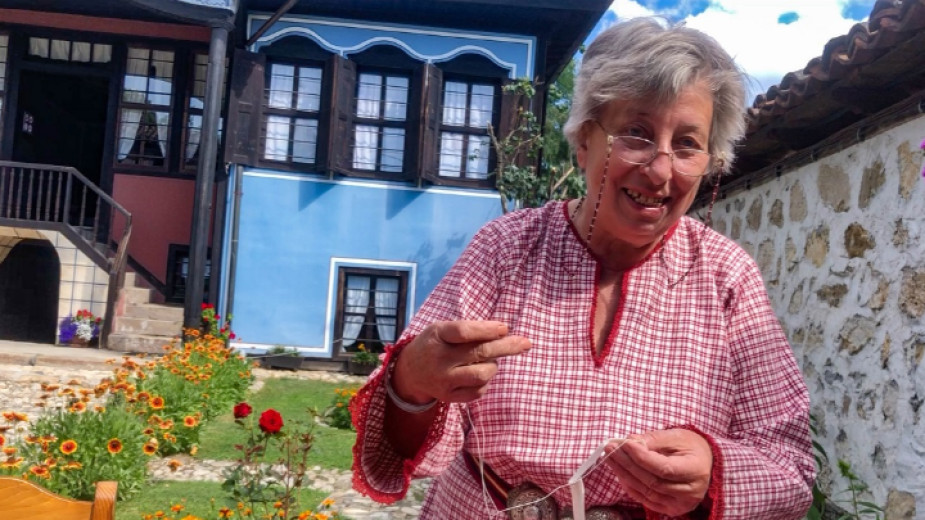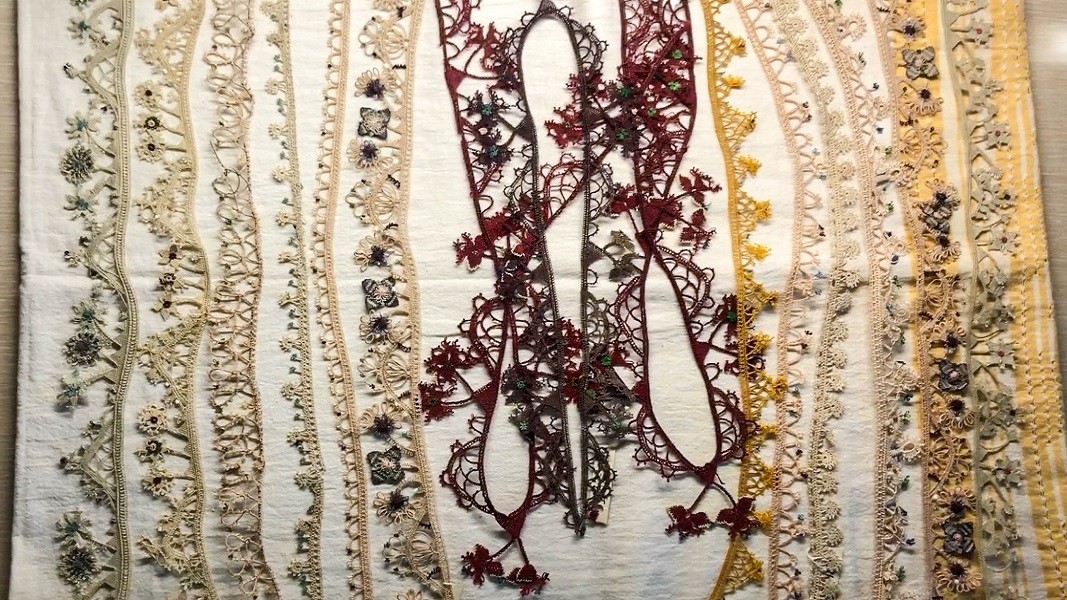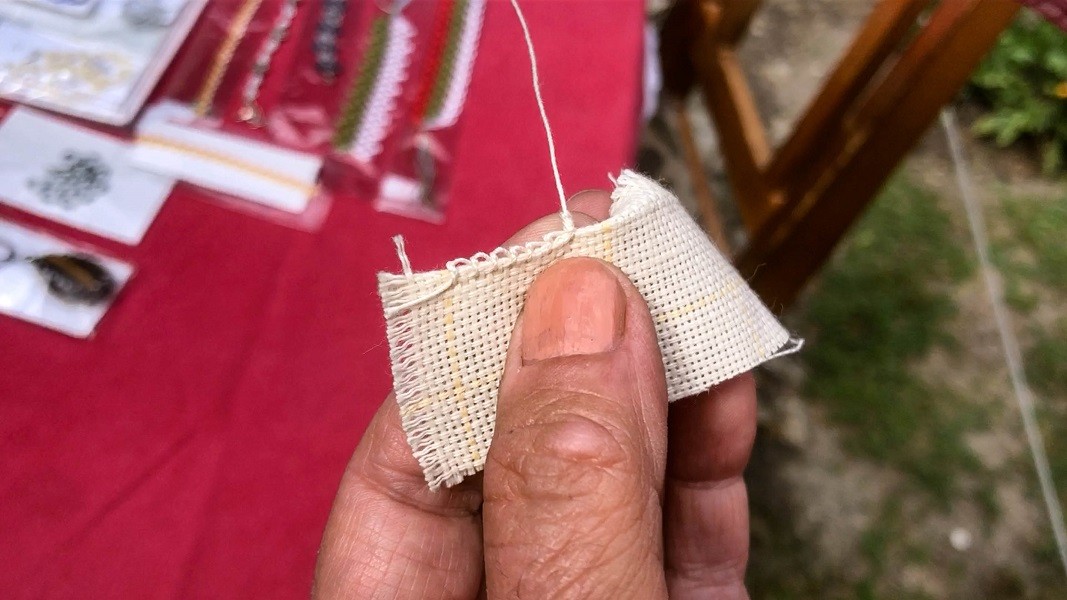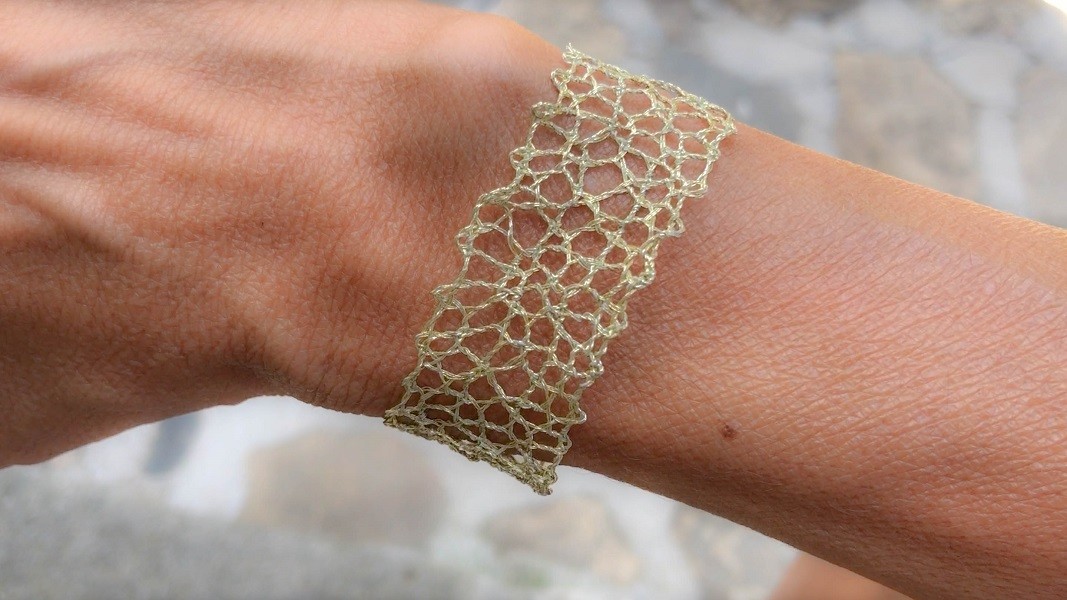
Translucent, delicate, made out of fantasy and love – the lace from the town of Koprivshtitsa, with its intricate ornamentation, used to be an element of all traditional clothing and household fabrics in the town. Once, the women of Koprivshtitsa would put their heart into the creation of a whole magical world made out of string. They would create geometric figures, wondrous flowers, birds, animals. In our day, this is an art that is dying out.
Yordanka Nikolova is one of the few women left who have continued the tradition into the present day. We meet with her at the Lyutov house in Koprivshtitsa, where the ground floor houses an exposition of authentic local fabrics, including the beautiful lacework of Koprivshtitsa. The house’s garden is used for demonstrations of traditional local crafts. In this instance, Yordanka is showing tourists an old crocheting method using shuttles, and how to make knots.

This technology was brought here from Europe. But a different kind of lace is more widespread in the country – needlepoint lace, also known as kene, she says.
The women of Koprivshtitsa used to sew, not crochet the lace they made, and they used a common or garden needle and… horsehair, which they used as lace ground, sewing onto it using silk thread. This is a method that has deep roots going back in time, and it probably came from the Far East. It is popular in other parts of the country as well, but the women of Koprivshitsa once had the reputation of the best kene-makers in the land.
“In Koprivshitsa each formal shirt had kene lace on the neckline and the sleeves. It is made out of horsehair, very tight, very dense, not loose as with the other kinds of lace, and with lots of floral elements, lots of flowers,” Yordanka Nikolova says. Each figure has a name – in Koprivshtitsa people have one name for it, in Ihtiman – another. But what I have heard from older people is that women made the ground for the kene, which is a horsehair mesh with little holes in it. And then other women, who were better at the craft, would make the more delicate, pretty but difficult elements – the delicate geometric shapes or flower petals, twigs etc.”

With shuttle lace, women would follow a certain model, but with kene it was up to the master craftswomen to choose how to ornament the lace – with a sure eye, a steady hand and lots of patience. Sometimes they would use colour thread to embroider additional ornaments edged with beads.
“Kene is all about the imagination of the woman making it. It reflects her feelings, her views. Silk thread was used, and they processed the silk too – boiling it to make it softer, then dyeing it green, purple, violet… We findkene lace on the visible elements of the formal dress people wore to go and dance the horo in the village square, or to celebrations. It was a lot of hard work,” Yordanka says.

She is a member of a group of women who want to revive the forgotten Bulgarian crafts and to transport them into the future. And she says more and more young people have been asking her, and the other members of the group, to teach them how to make traditional kene lace.
Watch Yordanka Nikolova demonstrate how to make kene lace in front of the Lyutov house in Koprivshtitsa:
Photos: Veneta Nikolova
For the first time in Sofia, the British show STOMP will perform in Hall 1 of the National Palace of Culture (NDK) from 8 to 10 November 2024. The show, which combines dance, music and theatre, will present its infectious blend of rhythm, drama and..
A protest is being held tonight in front of the Ivan Vazov National Theatre against the premiere of the play Arms and the Man by Bernard Shaw, staged by John Malkovich , which will open at 7 p.m. "This play should not be staged at the National..
A Bulgarian production company will build a new film center worth EUR 15 million in the Sofia-Bozhurishte Industrial Park. The film center will span over 30,000 square meters. The contract for the sale of the land will be signed at the end of..

+359 2 9336 661
